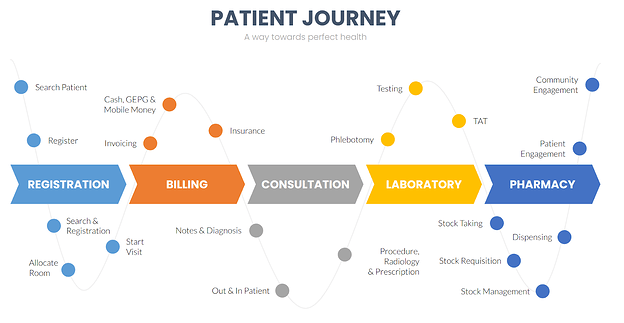Let’s be honest: healthcare in Tanzania, like many other countries, needs a little TLC. The current system is like a car running on fumes, with challenges that hinder the delivery of quality services to patients. It’s like a bumpy ride that leaves you feeling worse than when you started.
But fear not, my friends! At the University of Dar es Salaam DHIS2 Lab, we’ve got the wrenches and screwdrivers out to work on a comprehensive integrated health facility system that can help address the challenges faced by Tanzania’s healthcare system and maybe elsewhere.
Our proposed system is like the “Swiss Army Knife” of healthcare. Built on top of OpenMRS, it includes additional modules and features to provide a completely integrated solution. It’s like a superhero cape that can swoop in and save the day for patients, providers, and managerial entities at district, region, and national levels.
But what exactly does this comprehensive system do? Well, it takes into consideration some real-life fundamentals for patient interaction with healthcare providers. We call it “The Patient Journey” (cue the dramatic music).
Picture this: a patient arrives at a health facility and is first identified via a registration process. Next up, they get to sit down with a doctor for a consultation that’s paid for through a billing mechanism (because let’s face it, healthcare is expensive). Then, tests are done at the laboratory to figure out what’s ailing the patient, and the results are communicated to the physician. After that, the patient goes back to the physician for further consultation and treatment, and they receive a prescription for medication at the pharmacy. Finally, the patient is discharged and can go back to living their best life. Phew, that’s quite the journey, but with our comprehensive system, it’s like taking a luxury car ride on a smooth highway.
That, in simple terms, is how the services in the context of Tanzania, at least from a bird’s eye view, are provided. The diagram above is a simple conceptual framework of how a comprehensive system can help to provide services in a facility for good quality service to the patient.
Now, I know what you’re thinking. “What about the small aspects of indirect patient journey support?” Well, we’ve got that covered too. Our system includes features like complex laboratory processes, ingenious pharmacy/stock management capability, dashboards, and the involvement of external systems through interoperability(i.e. DHIS2) and more. Think of it like the side dishes that complement the main course of the patient journey.
But, like any good superhero, our proposed comprehensive system is not without its challenges. OpenMRS is like a Rubik’s Cube that requires some technical know-how to solve. Plus, dealing with complex UI/UX challenges in areas with still limited technological skills like Tanzania is no easy feat. But we’re up for the challenge, and we invite you to join us on this adventure.
In conclusion, our proposed comprehensive integrated health facility system has the potential to improve the quality of healthcare services provided in Tanzania and beyond. With the support of the community and stakeholders, we can tackle the technical challenges and ensure the success of this initiative. So, grab your superhero cape and join us on this exciting journey to make a difference in Tanzania’s healthcare system!
Stay tuned for more articles in a series that will include, but not limited to:
- Architectural Proposal of the Patient Journey
- iCare - Development of “The Patient Journey” at the UDSM DHIS2 Lab
- Unified Interoperability Adapter for DHIS2
- The Living Lab
- And much more
